Ben Brode on Hearthstone's Year of the Mammoth: 'This was our best year'
Team 5 talk about the ups and downs of the last 12 months.
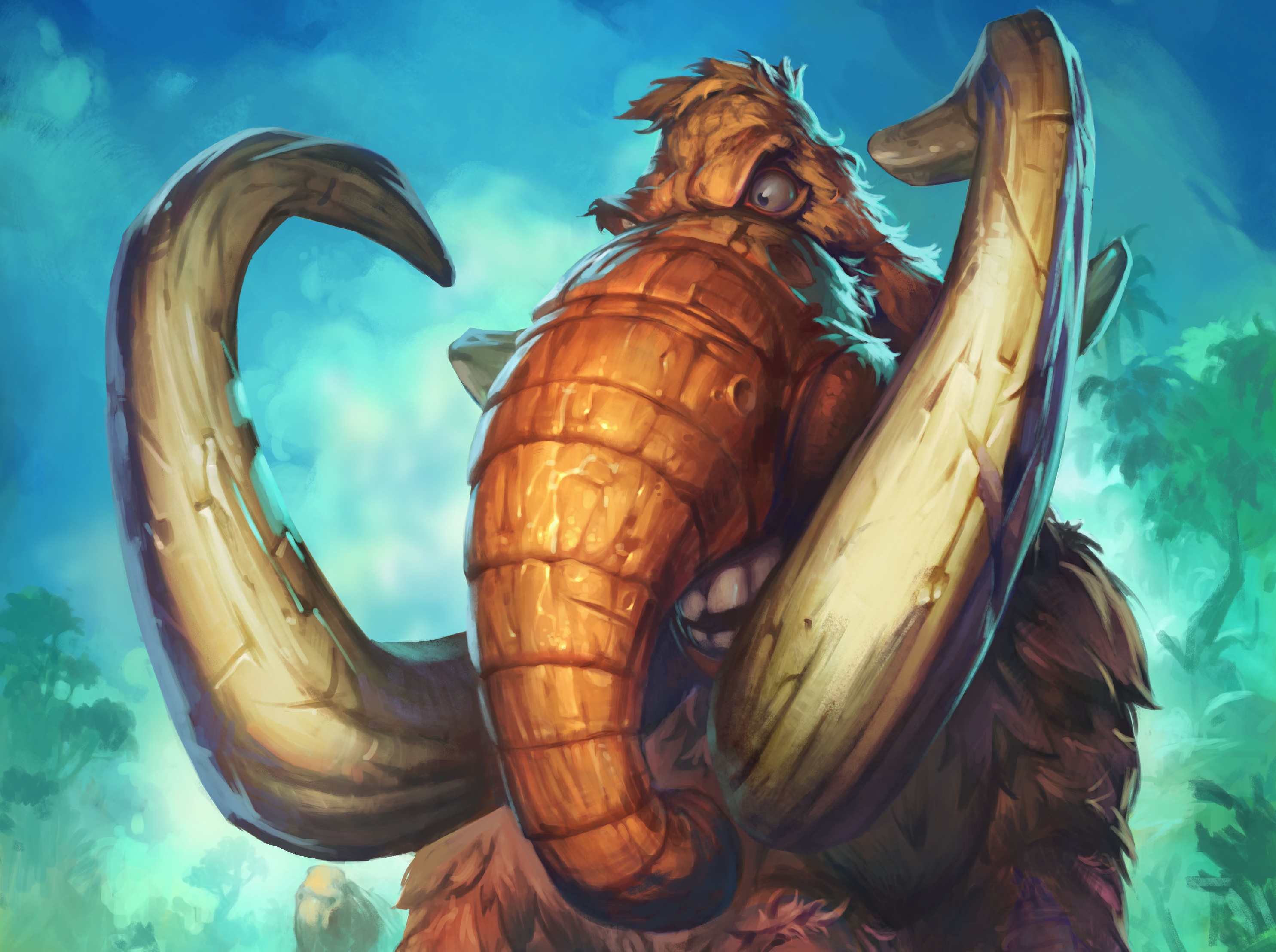
Judged purely on the the number of new cards released, the Year of the Mammoth was Hearthstone's biggest year yet, and to hear game director Ben Brode tell it, it was also the best. So, with the Year of the now Raven officially announced and due to kick off soon with the arrival of The Witchwood, I spoke to Brode and senior designer Peter Whalen about the most exciting and challenging moments from the previous cycle, starting with...
Journey to Un'Goro
"We did a lot in Un'Goro," Brode says. "There were a lot of different mechanical themes. And it was a rotation set, so it was going to make a huge splash in the meta no matter what. I wasn't sure we hit the exact right amount of mechanical complexity and power level given that it was already going to be impactful. It was going to be beefy because it was going to represent a huge portion of the total cards no matter what. But we did kind of go a little overboard maybe."
It's fair to say some that some ideas didn't quite land in Un'goro. Several Quests never had a chance to shine, and Elemental decks are still looking for support to this day. Looking back, Brode wishes they'd given away a free Quest like they did with the Death Knights for Knights of the Frozen Throne and Legendary weapons in Kobolds & Catacombs. But the hardest part of Un'Goro was polishing the face of the expansion: Elise the Trailblazer.
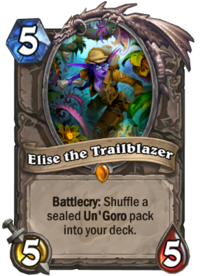
Elise was popular in grinder decks, especially Priest, which can duplicate her pack with Shadow Visions.
"Elise took a lot of iteration," Whalen explains. "We knew she was going to be one of the central characters in Un'Goro, and she'd already had a card in League of Explorers, so we needed to call back to that. We tried a lot of designs before we found one we were excited about.
"Her first design was 'Battlecry: Discover a Quest, and shuffle cards into your deck that will help you finish it.' So if you got the Paladin Quest, you would shuffle in some 'Exploring Gear' that would give a minion +1/+1. If you got the Warlock Quest, you'd get some 'Unruly Explorers' that would have 'Battlecry: Discard a card.' That kind of thing. We ended up not doing that one because it took some of the fun away from Quests. We tried 'All your Discovers and Adapts give you all three options.' That also took away some of the fun from both Discover and Adapt. Part of the fun is that you pick a thing. Just getting all of them took away that moment.
"She took a lot of steps because she was so important to the story of the set, and she's a really cool character that we wanted to make sure we captured right. You kind of call back to her original mechanic of going on this quest and shuffling things into your deck, then you find them over the course of the game."
Aside from the need to offer freebies related to the theme of the set, Team 5 left Un'Goro mindful of not overloading expansions with new mechanics, and careful to ensure new card types are equally fun to play. Though the Quests still see limited play now, their design means that new sets released in the Year of the Raven could still push them back into the spotlight.
The biggest gaming news, reviews and hardware deals
Keep up to date with the most important stories and the best deals, as picked by the PC Gamer team.
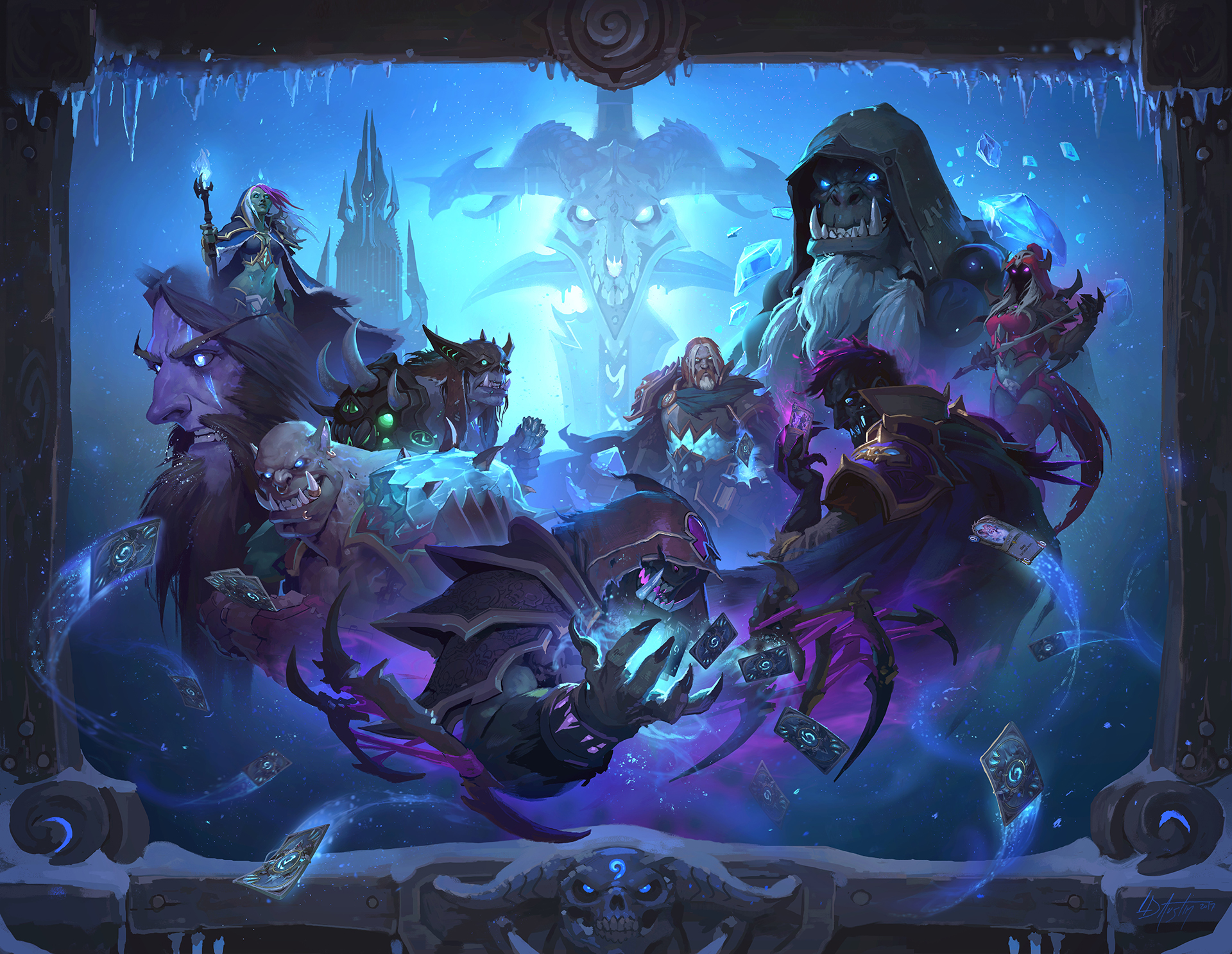
Knights of the Frozen Throne
"The Lich King was so important to both not make bad, and to make interesting," Brode says. "He changed a ton over the course of the set because the Death Knight mechanic changed dramatically multiple times through development.
We said 'look, if we're going to do the Dr. Boom thing again, it should be The Lich King.'
—Ben Brode
"We had a couple big goals. If you're doing a set about Northrend, people are going to ask about Death Knights. And you have to have a good answer for that. You can't say 'well we didn't do Death Knights.' And I also thought the answer couldn't be 'we literally just added a tenth class.' Because there's a lot of downsides to adding a tenth class. You have to slice the class identities even thinner than they are now, which I think is a thing we can do even better on, rather than making that problem harder for ourselves. You're less likely to get a card for a class you play out of a pack. So we didn't want to add a tenth class. We wanted a creative solution that really felt like we added Death Knights to the game, and it was hard to do.
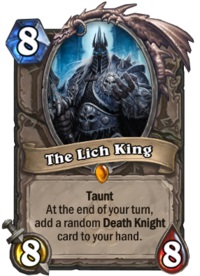
The randomness of The Lich King's card generation keeps him from being OP, much like Ysera.
"Once we landed on these new Death Knight hero cards, we tried to figure out if The Lich King should be a Legendary neutral Hero replacement. The king of all the Hero cards? Or does that take away from the idea that we have these nine class Death Knight Heroes? Is it weird to think 'first I change into Death Knight Jaina, then I change into the Lich King,' you know? Maybe you're playing multiple Heroes throughout the game.
"We tried to figure out a way to have cards like Death Coil and Death and Decay in the expansion somewhere. Those are iconic Death Knight spells, how do we get players to have those cards somehow? So we went with the idea of adding these spells to your hand for The Lich King. And we tried a bunch of other versions as well. There was one version where it shuffled a bunch of those into your deck, so you felt like you had a bunch of Death Knight spells you could play with. At the end of the day we felt like this version was right. It was an 8/8 with that effect. The very last change we made, very close to the end, was to add Taunt. We had some fear about redoing the Dr. Boom thing where he's just a neutral card that goes into every deck. And we said 'look, if we're going to do the Dr. Boom thing again, it should be The Lich King.'
I think we hit the nail on the head with the Lich King.
—Ben Brode
"And I think it's a little less scary when there's some amount of randomness involved, because it doesn't feel the same every single game when you're playing against The Lich King. It plays out a little differently each time. So because he was a little bit random, because he was The Lich King, because it was an important moment and we wanted to make sure he was powerful, we added Taunt. And I think we hit the nail on the head. He's very powerful, he sees play in several different decks, but he's not like Dr. Boom where you put him in every single deck. I think that's great."
The Lich King was also a white whale for Brode personally, a marker in his ever-changing position as the face of Hearthstone and also the guy keeping it together.
"My role has been changing a little bit, I've been doing less design and more management type things," he says. "And I got very excited about a particular execution of Death Knight spells, and pushed the team to explore them longer than they should have because they turned out to not be very fun. So I learned to trust the team more and be careful about how hard I push on designs when I'm not close enough to do enough play testing to really feel confident."
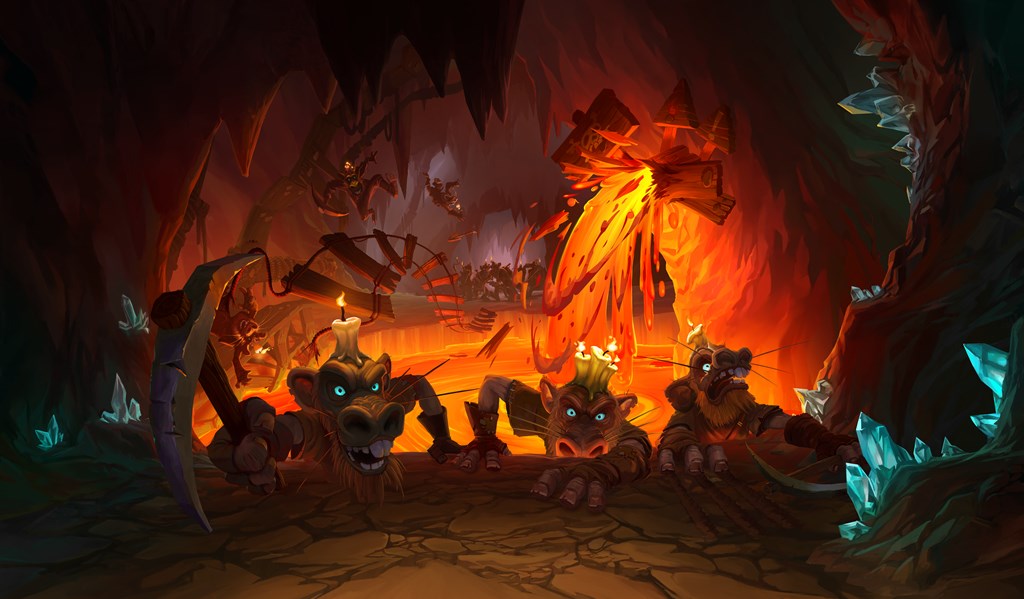
Kobolds & Catacombs
Whereas Journey to Un'Goro and Knights of the Frozen Throne focused on certain key, heavily iterated cards, Kobolds & Catacombs was a bit more scattershot. Giving every class a Legendary weapon was no easy task, of course, and Recruit cards like Gather Your Party and Call to Arms also carried some unique risks. Armed with Y'Shaarj as an example of how to do Recruit safely, and Barnes as an example of how to completely break it, Blizzard put limitations on new Recruit cards by fine-tuning their mana costs and restricting the minions that could be pulled. It's a good example of the cumulative learning experiences that, taken overall, define the Year of the Mammoth and the sense of design maturity it feels like Team 5 now has.
At the same time, balancing parts of Kobolds also helped set precedents for future content. The Echo effect coming in the Witchwood is basically Unstable Evolution: The Keyword, and Whalen tells me balancing Unstable Evolution proved to be quite the bug-bear. The same is true of Kobolds & Catacombs' biggest design challenge, and arguably greatest success: Dungeon Run.
The mode proved so popular that it led to rumours Blizzard sold less packs overall because players were having so much fun battling the bosses. Whatever the truth of that, it sounds like the feature will return in spirit in the form of the Witchwood's Monster Run mode. Hopefully we'll be treated to some even more fantastic bullshit.
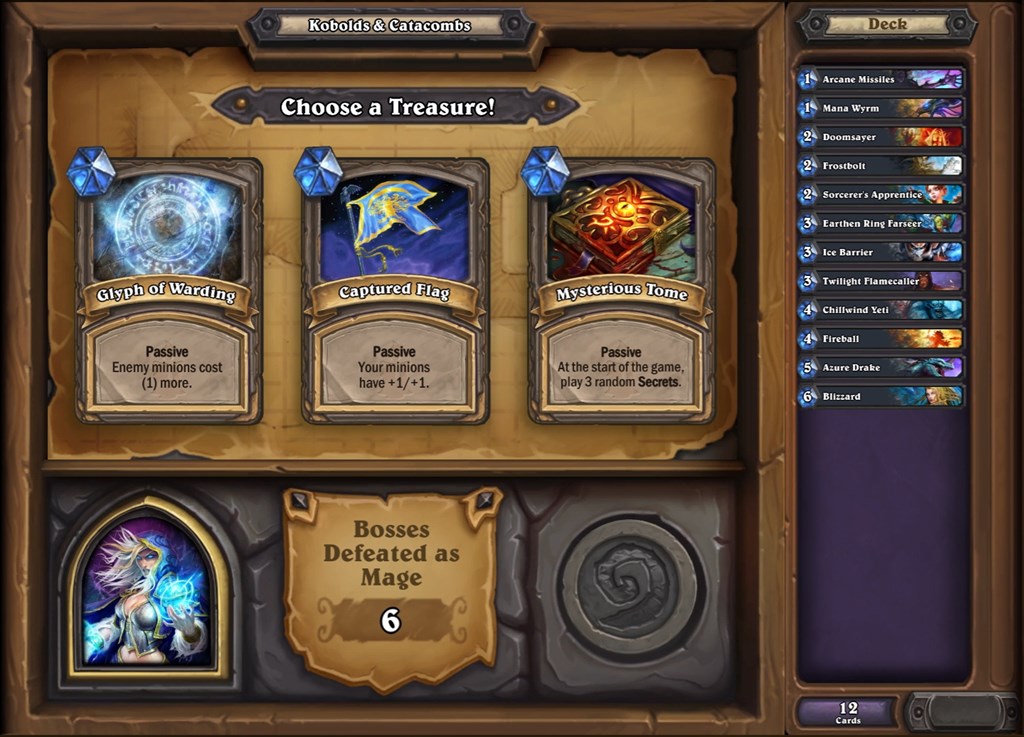
"The basic Dungeon Run structure that we ended up shipping was the idea the whole way through, but we tested a whole bunch of different ways of acquiring cards," Whalen explains. "How often do you get these powerful artifacts added to your deck? What kind of passive effects do you get? How do the normal collectible cards get added to your deck?"
"How many bosses should the run be?" Brode adds.
"One thing I think worked great in Year of the Mammoth was a lot of events,"
—Ben Brode
"Yeah. And should the bosses be linked in some way?" Whalen continues. "A very early pitch had you going through wings essentially. You'd go through the Elemental wing and fight three different Elementals. Then you'd go through the 'Kobolds pretending to be other creatures' wing, and you'd fight a Kobold pretending to be a Troll Shaman or a Kobold pretending to be a pirate. And then the adventurer wing where you'd face off against some of the adventurers in the dungeon. But that ended up decreasing the replayability. It felt like having you fight all the bosses in some random order gave more variety to your runs."
For many players, Dungeon Run was not only the best part of Kobolds & Catacombs, but the single best thing to come out of the Year of the Mammoth. It's certainly the most exciting feature that's been added to Hearthstone. Improving the game's singleplayer content is just one of many lessons the team is taking with it into 2018.
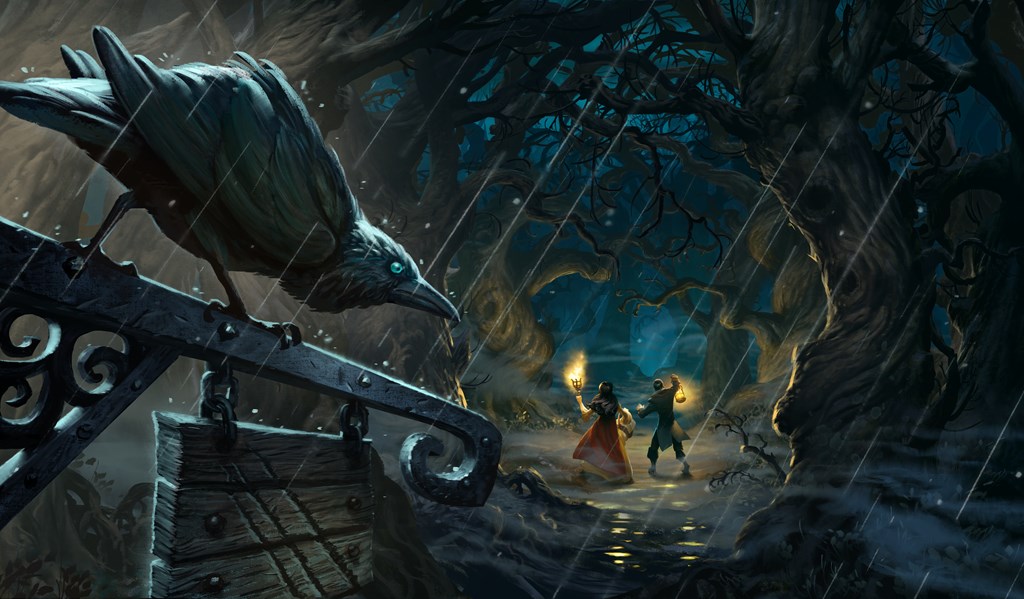
The year ahead
"One thing I think worked great in Year of the Mammoth was a lot of events," Brode says. "We did things like the Fire Festival, the Frost Festival, dual-class Arena, Wild Fest. That was awesome and we'll probably see some of those events come back in Year of the Raven, but we're also going to see some new events. I think some of the stuff the team is working on is really exciting and really keeps the game feeling fresh in a way we were kind of hoping Tavern Brawls would, but they became somewhat expected. These events really shake up the game in a much bigger way.
"There's tons of things we want to explore more, but I'll talk about two. One is offering more options for competitive play. The in-game tournaments we announced are really exciting as we continue to explore ways to have competitive experiences. The other thing is Fireside Gatherings. I think they're really exciting, a great way to turn Hearthstone into a social experience with your friends. We have some big plans on how to improve that over the course of the year."
On the more granular card side, Whalen says there's room to improve on class identities. "In Un'Goro we had the Quests, and that kind of pushed you in a direction where you could try out Murloc Shaman and it's a deck-building hook for you," he says. "It lets you open some packs on day one and say 'oh, I'm a Shaman player, this is something I want to try out.' At the same time, having more than one of those in each class is also one of the things that was a learning experience. I think if you don't like murlocs and you're a Shaman player, it's great that there are also elementals you can explore."
Who knows, maybe we'll even get enough support to make Freeze Shaman a thing. We'll have tons more on The Witchwood in the coming weeks, but for now check out our list of the top 20 legendary cards your collection should contain heading into the Year of the Raven.

Austin freelanced for PC Gamer, Eurogamer, IGN, Sports Illustrated, and more while finishing his journalism degree, and has been a full-time writer at PC Gamer's sister publication GamesRadar+ since 2019. They've yet to realize that his position as a staff writer is just a cover-up for his career-spanning Destiny column, and he's kept the ruse going with a focus on news, the occasional feature, and as much Genshin Impact as he can get away with.

